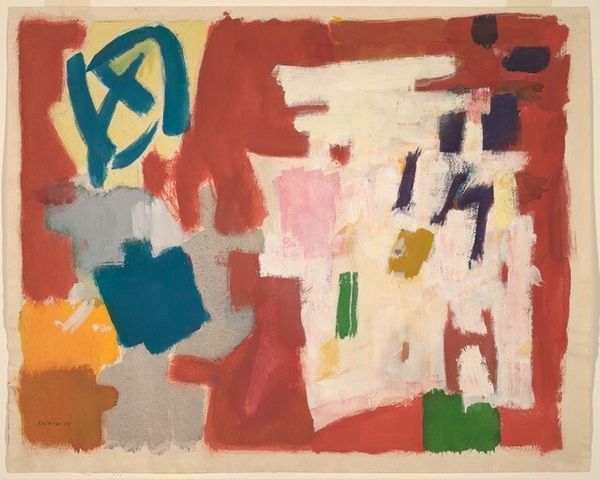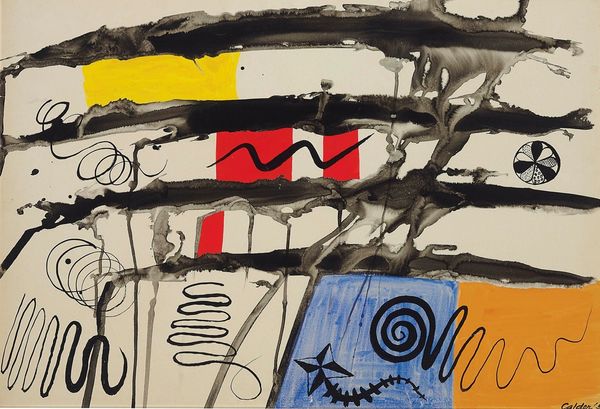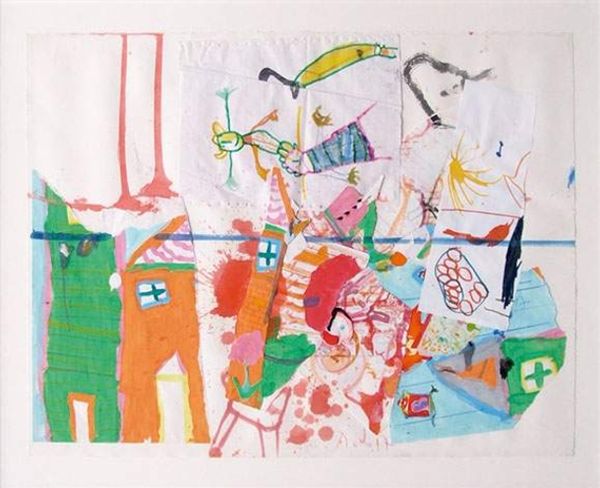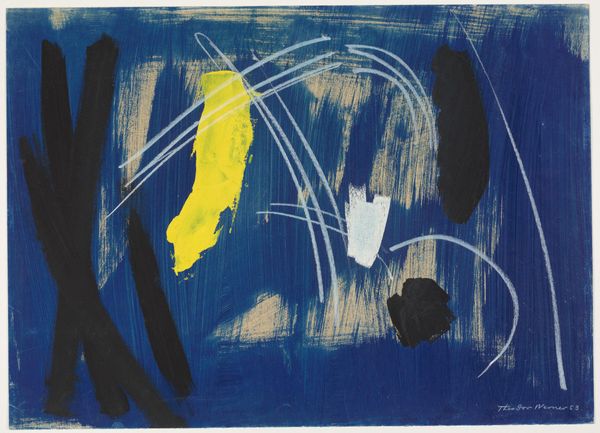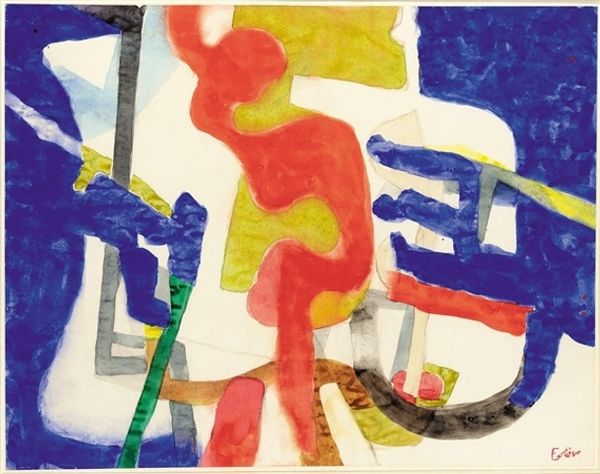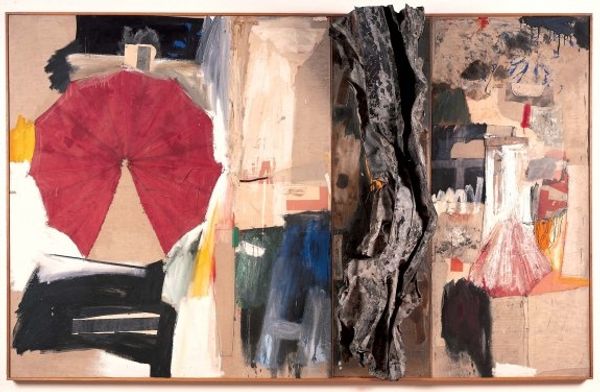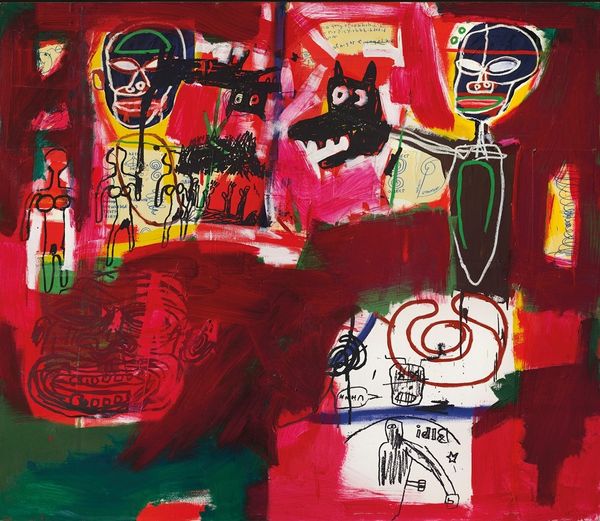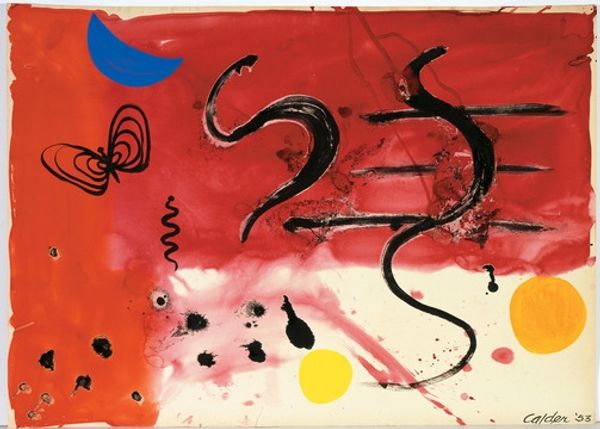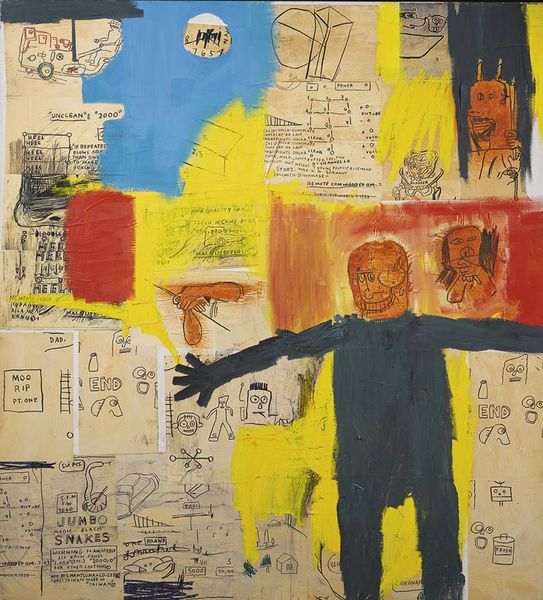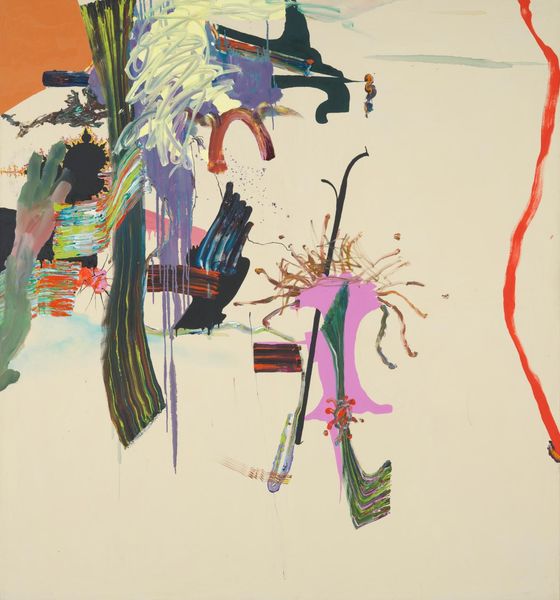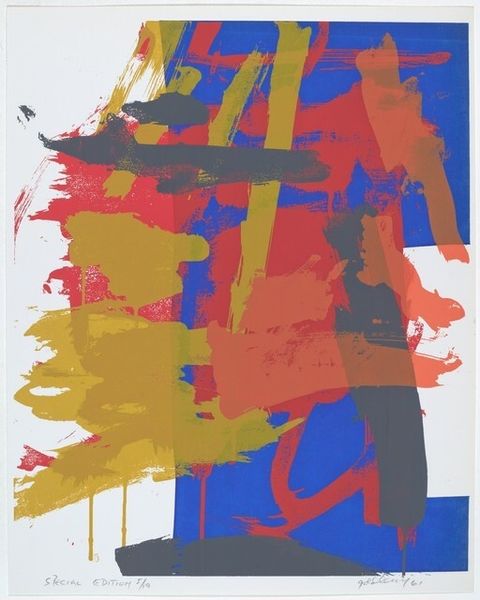
Copyright: Modern Artists: Artvee
Editor: This is Jean-Michel Basquiat’s "Parts," from 1984. It's a mixed-media collage with acrylic paint on canvas. It’s dominated by this intense red, with fragmented images and text scattered across the surface. What's striking to me is how disjointed it feels; there’s no clear narrative. What do you see in this piece? Curator: Exactly! Its fragmented nature isn't accidental. I see a powerful critique of cultural commodification. Basquiat lived and worked in a milieu obsessed with parts – pieces of culture, identity, and history – being constantly consumed and reconfigured, often without context or respect. Editor: Can you elaborate on that a little? The idea of 'parts' being consumed? Curator: Think about the "snakes" advertisement juxtaposed with the abstract figure. It could be an ironic commentary on the media's manipulation and the way it devours and distorts reality for profit. And then consider the intense red background. Does that communicate something to you? Editor: Well, it's definitely striking! I guess I would associate red with violence, anger, or warning… Curator: Right, consider this painting was created in the mid-1980's amid growing socio-political turmoil around race and social injustice. Red can evoke a sense of urgency, a call to awareness but also to resistance and even… rage against these systemic issues. Look, too, at his application of collage, abstraction, and text. The composition feels anarchic. Does that anarchism have a root? Editor: The scribbled words, the rough lines, it does feel rebellious. Are you saying that it could speak to something about his experience of Black identity in the art world at the time? Curator: Precisely! Basquiat wasn't just creating art; he was actively engaging in a dialogue with power, race, and the structures that perpetuate inequality. This artwork forces us to question what is being consumed and who is being marginalized. Editor: That makes so much sense. I had been approaching it as a visual puzzle, but I can now understand how the chaotic elements create an intentional challenge to systems of power. It shows how a work can engage in wider socio-historical themes.
Comments
No comments
Be the first to comment and join the conversation on the ultimate creative platform.

